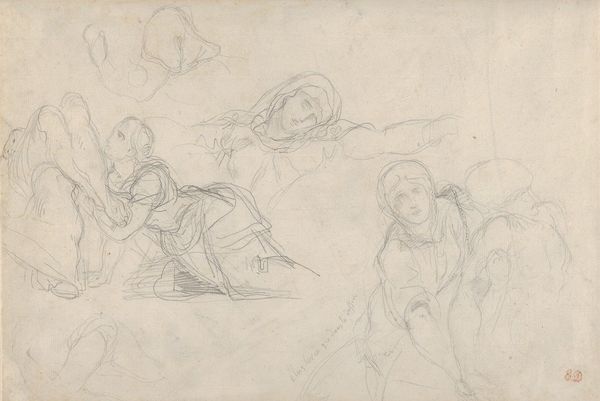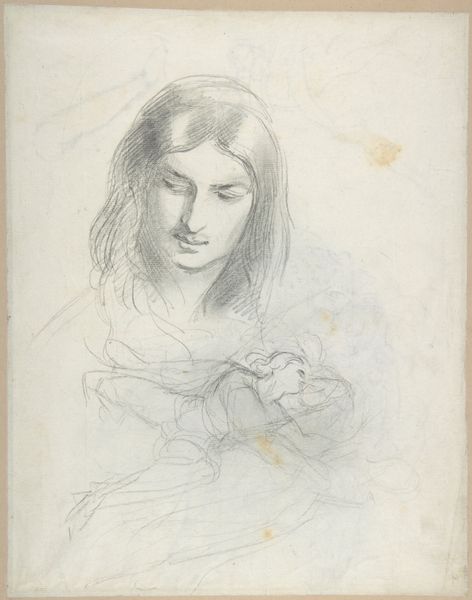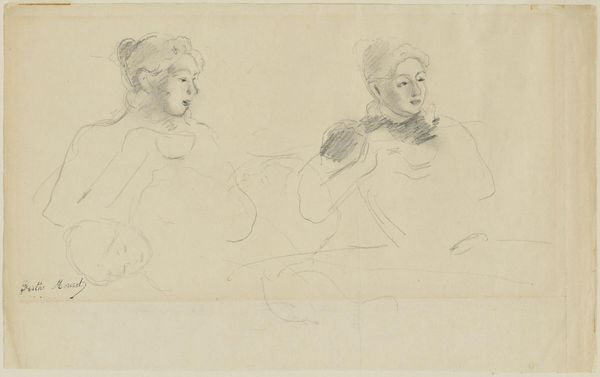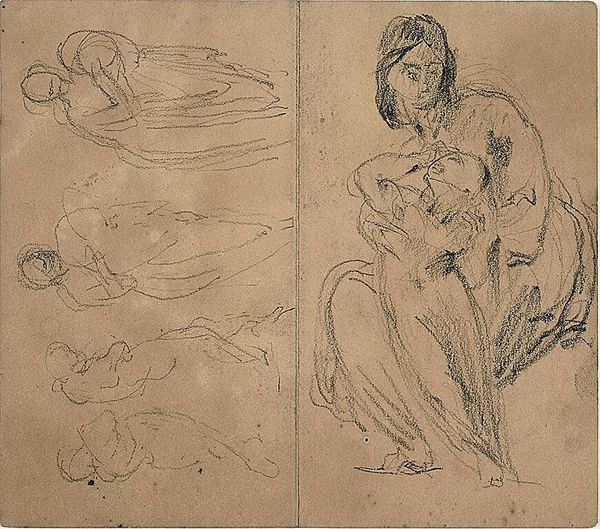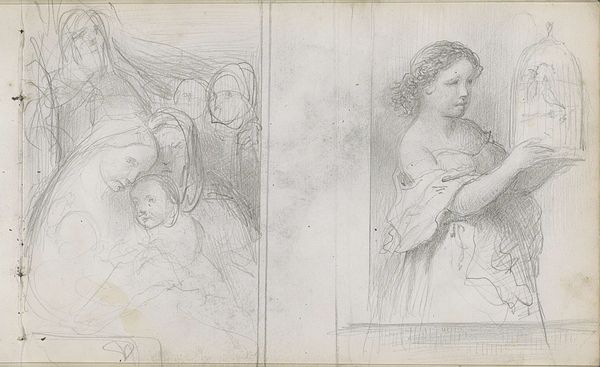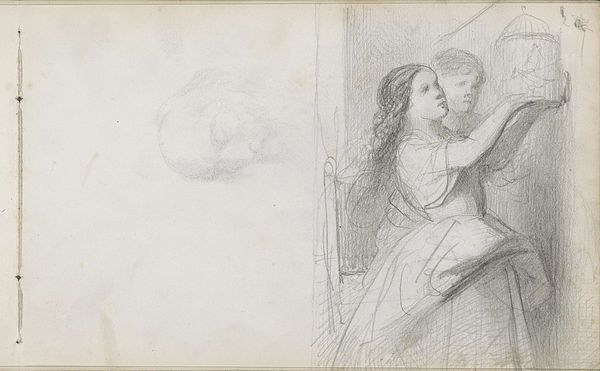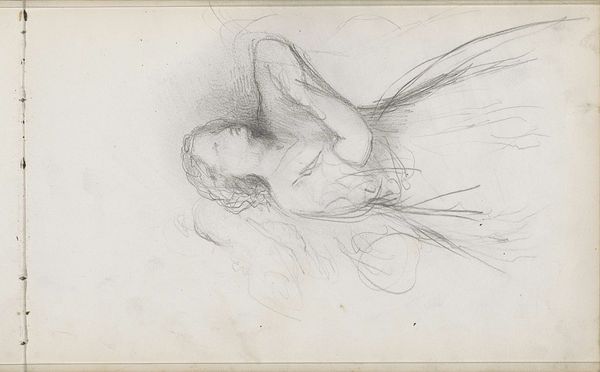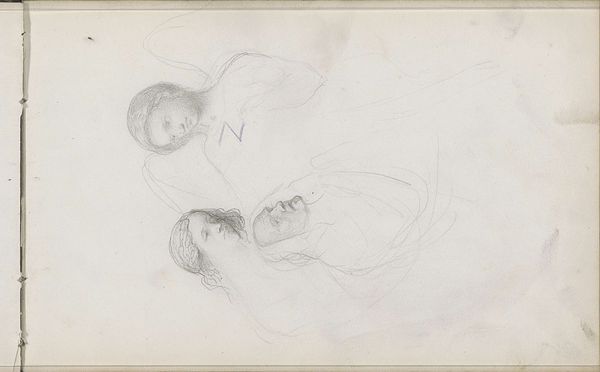
drawing, pencil
#
portrait
#
drawing
#
figuration
#
pencil
Copyright: Rijks Museum: Open Domain
Curator: This drawing, "Moeder met kind" from around 1858, by Bastiaan de Poorter, is made with pencil. There's a tentative, unfinished quality to the pencil strokes that I find quite captivating. What are your first thoughts? Editor: The softness of the pencil creates such a tender scene. It looks like a sketch, maybe a study for a larger painting, focusing on the relationship between the mother and child. What do you see in this work beyond the surface depiction? Curator: For me, it's fascinating to consider the materiality of this work – a humble pencil on paper – against the backdrop of the mid-19th century and its social upheavals. What kind of labor produced this image, and for whom? Was this for public consumption, or a more private endeavor? How does that change our perception? Editor: That's interesting, I hadn’t thought about it in those terms. Was pencil drawing considered 'lesser' than painting at the time, because it was cheaper or quicker to produce? Curator: Precisely! The "means of production" matter. Pencil wasn't yet fully embraced by the fine art establishment. Its association was often with preliminary sketches or "women's work", considered more appropriate for delicate hands and domestic spaces. Could de Poorter be making a conscious decision by choosing this accessible, almost democratized medium? Editor: So, the act of choosing pencil itself becomes a statement. And thinking about “women’s work," the subject matter of mother and child also becomes intertwined with labor and gender roles, then. Curator: Absolutely. By representing this archetypal image, perhaps De Poorter aimed to elevate the everyday. This might make us think of the working-class mother and how they spend their days. He reframes their emotional, invisible labor in a material form. It’s all interwoven: medium, subject, social perception. What will you take from our discussion? Editor: Considering the social and material context really enriches my understanding. I am definitely going to think more about artistic choices. Curator: Excellent! Remember, art doesn’t exist in a vacuum, everything has a history of making and production.
Comments
No comments
Be the first to comment and join the conversation on the ultimate creative platform.
